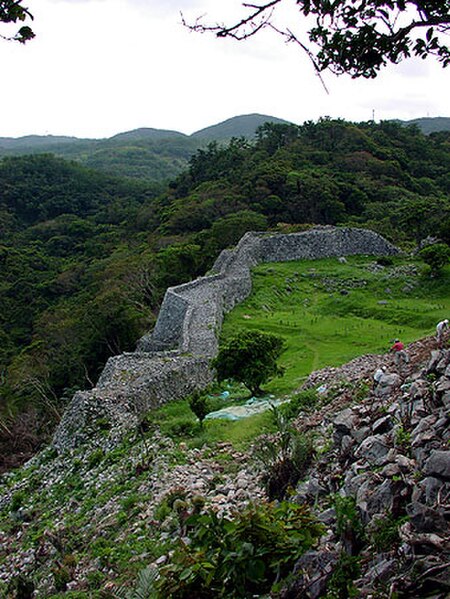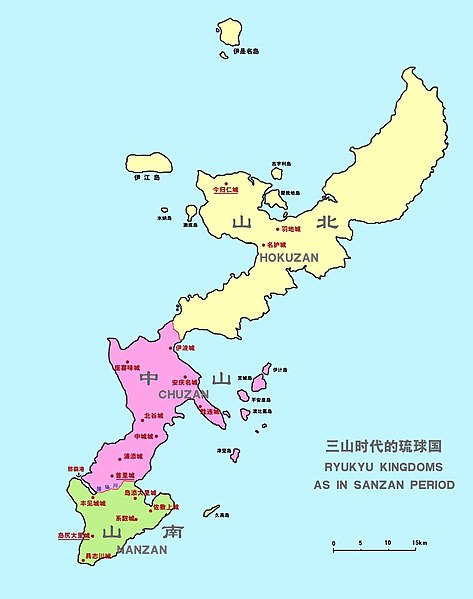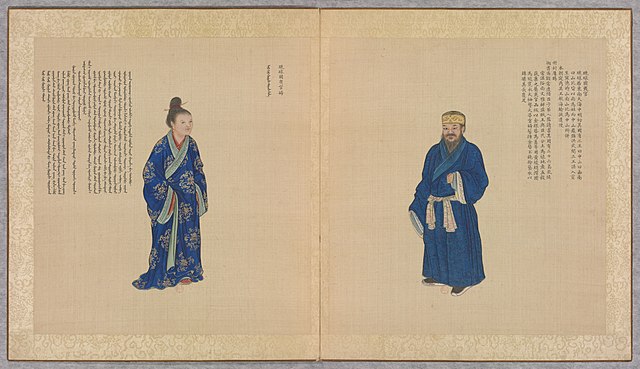The Sanzan period is a period in the history of the Okinawa Islands when three lines of kings, namely Sanhoku , Chūzan and Sannan , are said to have co-existed on Okinawa Island. It is said to have started during King Tamagusuku's reign and, according to Sai On's edition of the Chūzan Seifu (1725), ended in 1429 when Shō Hashi unified the island. Historical records of the period are fragmentary and mutually conflicting. Some even question the co-existence of the three polities.
Nakijin Castle, identified as the King of Sanhoku's residence
The Ryukyu Kingdom was a kingdom in the Ryukyu Islands from 1429 to 1879. It was ruled as a tributary state of imperial Ming China by the Ryukyuan monarchy, who unified Okinawa Island to end the Sanzan period, and extended the kingdom to the Amami Islands and Sakishima Islands. The Ryukyu Kingdom played a central role in the maritime trade networks of medieval East Asia and Southeast Asia despite its small size. The Ryukyu Kingdom became a vassal state of the Satsuma Domain of Japan after the invasion of Ryukyu in 1609 but retained de jure independence until it was transformed into the Ryukyu Domain by the Empire of Japan in 1872. The Ryukyu Kingdom was formally annexed and dissolved by Japan in 1879 to form Okinawa Prefecture, and the Ryukyuan monarchy was integrated into the new Japanese nobility.
The main building of Shuri Castle
Traditional Ryukyuan clothes in late period, which were much closer to the Japanese kimono.
Hokuzan, Chūzan, Nanzan
Image: Huang Qing Zhigong Tu 011





